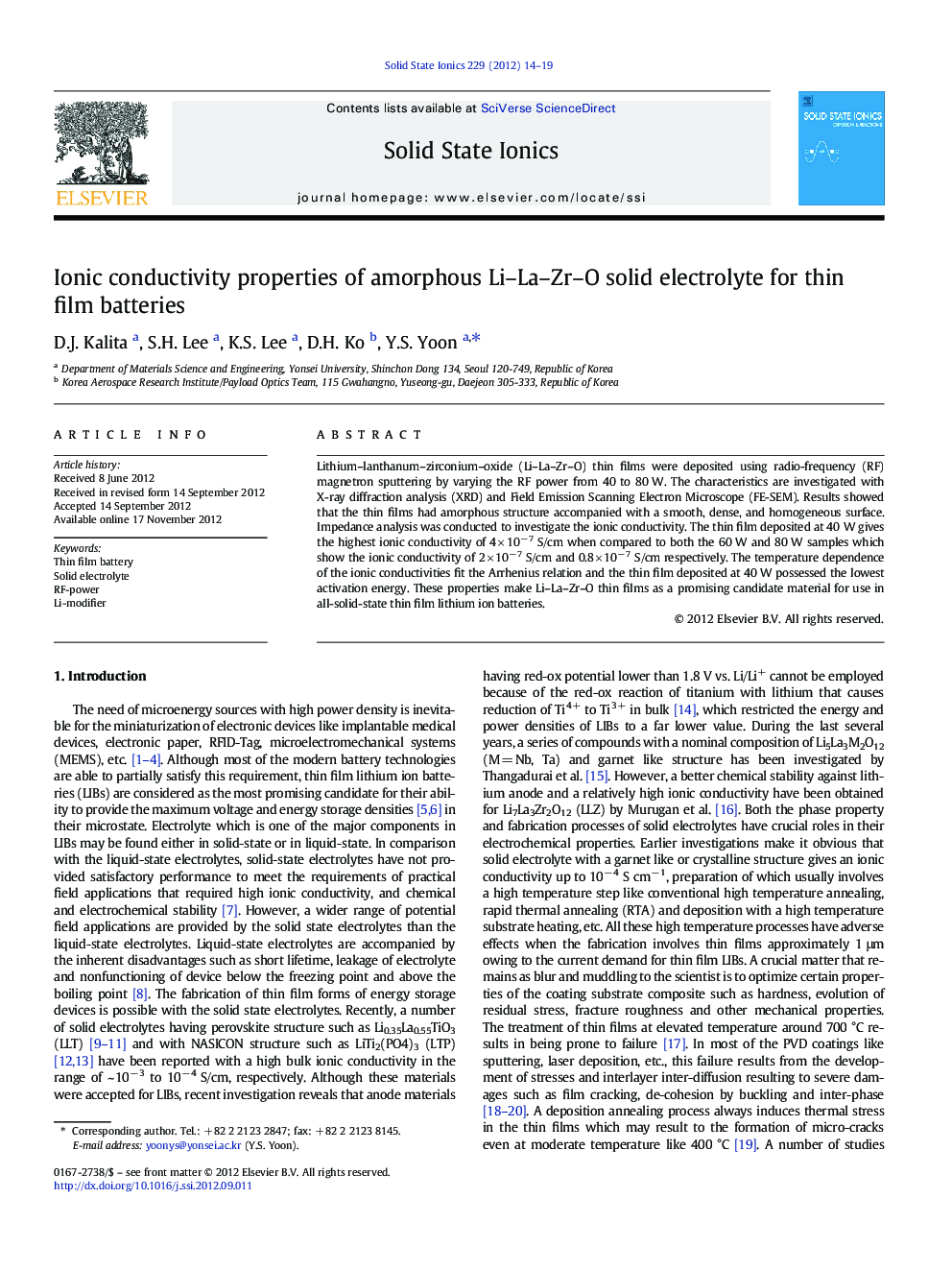| کد مقاله | کد نشریه | سال انتشار | مقاله انگلیسی | نسخه تمام متن |
|---|---|---|---|---|
| 1296911 | 1498310 | 2012 | 6 صفحه PDF | دانلود رایگان |

Lithium–lanthanum–zirconium–oxide (Li–La–Zr–O) thin films were deposited using radio-frequency (RF) magnetron sputtering by varying the RF power from 40 to 80 W. The characteristics are investigated with X-ray diffraction analysis (XRD) and Field Emission Scanning Electron Microscope (FE-SEM). Results showed that the thin films had amorphous structure accompanied with a smooth, dense, and homogeneous surface. Impedance analysis was conducted to investigate the ionic conductivity. The thin film deposited at 40 W gives the highest ionic conductivity of 4 × 10− 7 S/cm when compared to both the 60 W and 80 W samples which show the ionic conductivity of 2 × 10− 7 S/cm and 0.8 × 10− 7 S/cm respectively. The temperature dependence of the ionic conductivities fit the Arrhenius relation and the thin film deposited at 40 W possessed the lowest activation energy. These properties make Li–La–Zr–O thin films as a promising candidate material for use in all-solid-state thin film lithium ion batteries.
► Li–La–Zr–O thin films were fabricated with RF magnetron sputtering.
► Ionic conductivities of the thin films were evaluated at room temperature.
► Ionic conductivities were improved with lower deposition power.
► Activation energy had moderate value from 0.70 eV to 0.87 eV.
Journal: Solid State Ionics - Volume 229, 14 December 2012, Pages 14–19